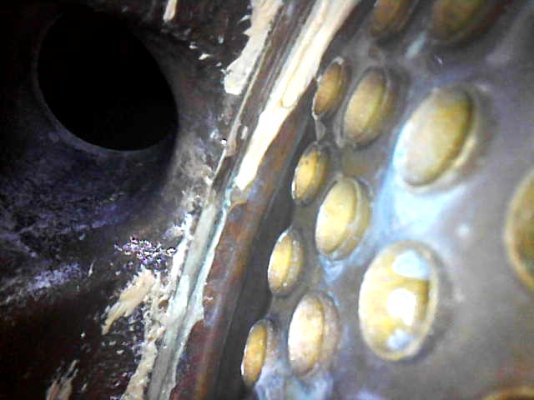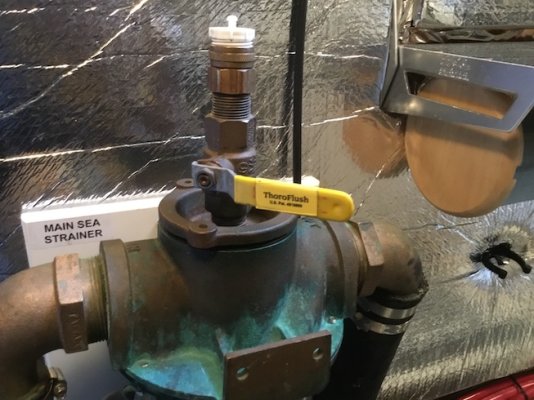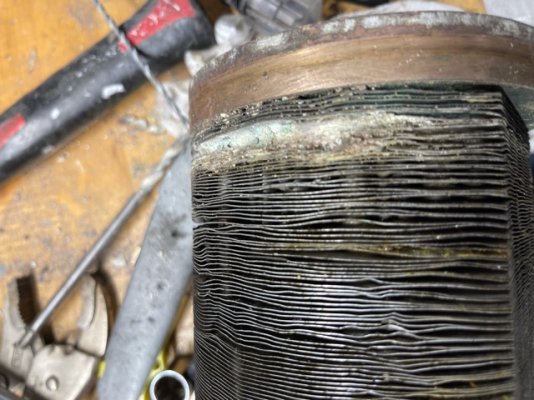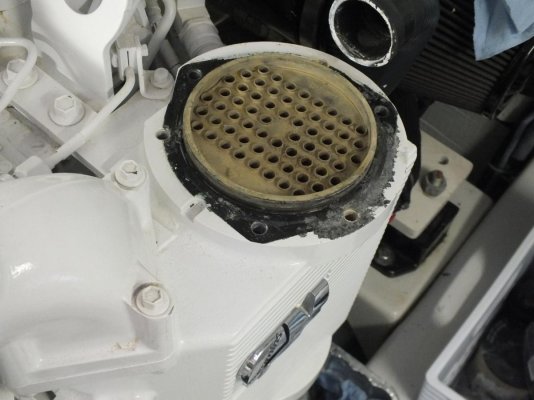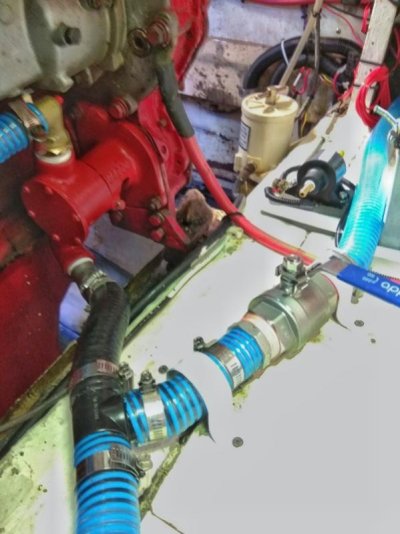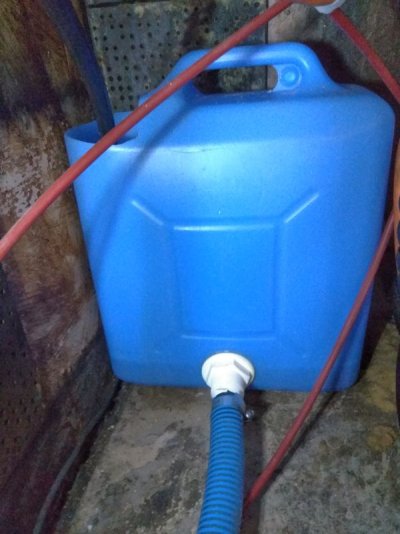Andrew,
I don't know why you would need to try to do it this way and use (valuable due to limited capacity) tank water instead of taking the very few minutes to get out a hose?? The engine could use up to 10 gal. per minute at idle so even a short 3 minute flush would need around 20-30 gallons of tank water?

(say 1/4 to 1/3 of a tank on a lot of boats).
Just connect a "stiff" dock hose to a "garden hose" fitting on your sea strainer. Open thru hull and turn on dock water (pressure exits the bottom of the boat and actually backflushes the thru hull). Start engine and close thru hull (could leave thru hull fully or partially open and still receive benefit). Run for 3-5 minutes at idle. Shut down dock water and engine at same time, or water first followed by engine in a few seconds. Open thru hull to relieve any pressure (and if you normally leave it open). Put hose away. If you are worried about your impeller (there should be no problem as long as dock water has reasonable flow), put your hand on the raw water pump cover. If it is not hot, you have enough flow! If it feels very warm to hot, just open thru hull (partially or fully as needed). You only need enough water to keep the impeller cool when running for only a few minutes at idle.
As a boater, do you NEED to freshwater flush. Absolutely not. Many, many boaters do not, but, they miss out on the benefits. However, experience has shown that there are many benefits to doing a freshwater flush regularly (doesn't have to be after every run). However, proper preventative maintenance is still required (just less often and the system is kept in better overall condition between services) to keep your engine's cooling system operating at peak efficiency. Overheats can be VERY damaging to engines. Aftercoolers are a special item, and require servicing more often than the other components (should service every 2-3 years, with FW flushing can probably extend that time to every 3-4 years). An important part of all full servicing of the raw water cooling system components is PRESSURE TESTING. Without pressure testing, you could have sea water leaking into your transmission, or into your coolant, into the fuel supply (leaking fuel cooler), into the engine's air intake, etc.

Paying for a full service of your raw water cooling system can run several thousand dollars (depending on mechanic rates), so extending the time between services can be worth it monetarily, to say nothing about the peace of mind knowing your system is well maintained. I did my own servicing, but it is time consuming and reducing that by spending 10 minutes to regularly FW flush makes sense to me.



